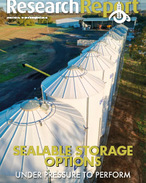This article is 7 years old. Images might not display.
The agreement will eliminate more than 98 per cent of tariffs in the free trade area.
The TPP-11 countries include Australia, Brunei, Canada, Chile, Japan, Malaysia, Mexico, New Zealand, Peru, Singapore and Vietnam, creating a regional free trade area that links the Americas and Asia.
These new markets include a combined gross domestic product (GDP) of $13.7 trillion and comprise of three of our top 10 agricultural trade markets; Japan, Vietnam and New Zealand.
The signing of the trade deal would also provide preferential access for more than $5.5 billion of Australia’s dutiable agricultural exports.
Minister for Agriculture and Water Resources, David Littleproud, said the trade deal would have an immediate benefit for exporters and create brand new opportunities into two new markets – Canada and Mexico.
“This trade agreement will create huge opportunities for our beef, sheep, dairy, sugar, wool, wine and horticulture producers in current and new markets,” Minister Littleproud said.
“My department is supporting industry’s efforts to improve sheep meat export arrangements to Mexico, to capitalise on Mexico’s elimination of tariffs on sheep meat within eight years of entry into force,” he said.
“Australia is seeking to regain access into Japan for blueberries and improve market access for other horticulture commodities, including mangoes.
“Work is now underway to establish technical market access for Australian beef exports to Peru to take advantage of market access outcomes from both the TPP-11 and the Peru-Australia Free Trade Agreement.”
“Last year Australia exported around $12 billion worth of agricultural goods to the TPP-11 countries, so this is a real game changer with huge potential.”
Highlights of TPP-11 include:
- new reductions in Japan's tariffs on beef (Australian exports worth $2.1 billion in 2016-17);
- new access for dairy products into Japan, Canada and Mexico, including the elimination of a range of cheese tariffs into Japan covering over $100 million of trade;
- new sugar access into the Japanese, Canadian and Mexican markets;
- tariff reductions and new access for Australian cereals and grains exporters into Japan, including new access for rice products into Japan for the first time in 20 years;
- elimination of all tariffs on sheepmeat, cotton and wool; and
- elimination of tariffs on seafood, horticulture and wine.























